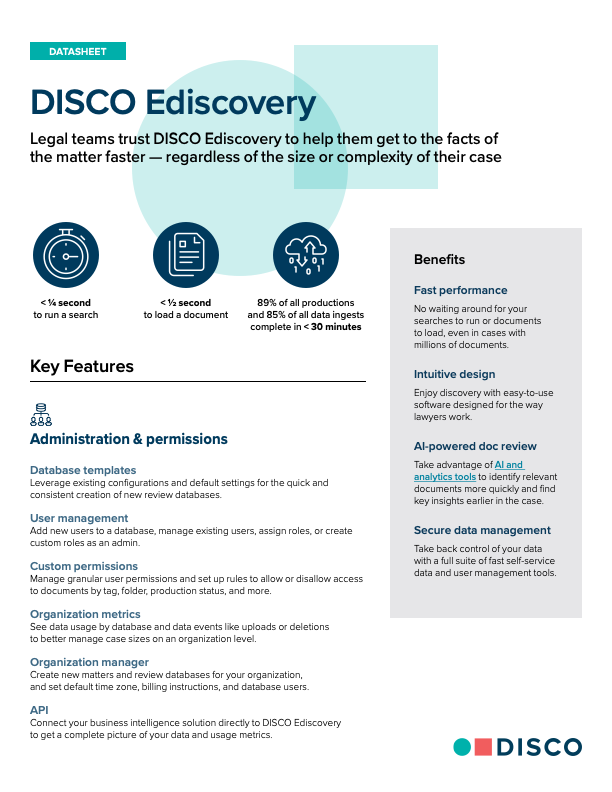
What We Do
Resources
Featured
Listicle
A Guide to Bringing Ediscovery In-House
6 Benefits corporations gain when they say goodbye to the ediscovery status quo
.png)
Read more

Case Study
From the Mailroom to the Cloud
A global financial services company partnered with DISCO to streamline and centralize their legal request processes, reducing complexity, paper usage, and enabling a successful transition to remote work.
.png)
Read more





.svg)















.png)





